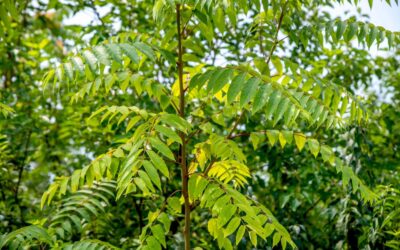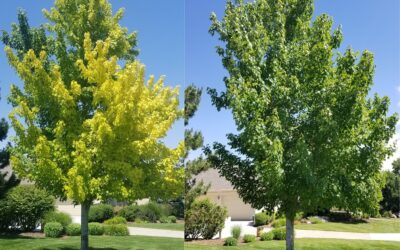When East met West somewhere in Spain or England (no one knows for sure) in the mid-1600s, a new tree was born, the London planetree, as it’s commonly called. The London plane is a hybrid of the oriental plane and American sycamore (occidental plane). The name is not aeronautical, but rather refers to the tree’s large flat (planar) leaves.
Size, Lifespan, Hardiness and Living Conditions
A very large, attractive tree, the London planetree can reach heights of over 100 feet and spread nearly as wide. It’s a tough customer too, able to live for hundreds of years under the right conditions, and when people discovered how well it stood up to the smoke and soot-filled atmosphere of London and other large European cities of the time, its popularity in urban landscaping was assured.
It became popular in the U.S. when it was learned that it withstood disease and environmental challenges better than its parent sycamore. Hardy in zones 5-8, the London planetree prefers rich, moist, well-drained soils, but tolerates dry, alkaline clay soils, too, and is tolerant of hot, dry climates, so it does well in Colorado everywhere except in higher elevations.
Foliage, Color, Flowers, Seeds and Bark
The London planetree has large five-lobed flat leaves up to 10” widewhich look similar to maples. The leaves can range from bright to deep green, turning a dull yellow before dropping in the fall. Early small red flowers are inconspicuous and mature into bristly seed balls that attract finches and squirrels. Both the young leaves and seed balls have short, stiff hairs that blow away and can be breathing irritants, especially for people with asthma. Its unique, mottled bark has scales that reveal green, white, and yellow coloring below it, and its branching makes it a visually interesting tree in both summer and winter.
Lots of Space and Sun for Ample Shade
Its large size and need for at least four hours of direct sunlight make it unsuitable for planting in small spaces, but the London planetree has been a favorite shade tree for urban streets and open spaces like parks for over 400 years. Londoners like it so much that it won an Award of Merit from the Royal Horticultural Society. Its stylized leaf is featured in the logo of the New York City Parks Department.
Call us today at 303-623-8733 for a free estimate to plant a London planetree on your property!



